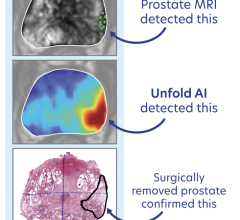
January 4, 2018 — Patient-reported outcomes (PROs) indicated a significantly different clinician and patient-reported late toxicity profile for external beam radiotherapy and brachytherapy (EBT+ B) versus transperineal interstitial permanent brachytherapy (B) alone in men with intermediate-risk prostate cancer. The results from the NRG Oncology trial RTOG 0232, presented at the 2018 American Society for Radiation Oncology (ASTRO) annual meeting, did show similarities in progression-free survival.
NRG-RTOG 0232 evaluated the differences between progression-free survival and patient-reported outcomes on two separate treatment arms. The first arm was treated with combined partial pelvis EBT+B, whereas the second was treated with B alone. Men with prostate carcinoma were randomly assigned to receive treatment on one of the two arms. Researchers measured changes from baseline to 4 and 24 months using expanded prostate index composite (EPIC) and assessed three prostate cancer-specific PRO domains that included bowel, urinary and sexual.
“Although progression-free survival was similar on both treatment arms, the addition of external beam therapy yielded a higher percentage of clinician-reported late grade 3 or greater toxicities. The patient-reported data confirms that brachytherapy alone is the superior treatment for this for men with intermediate risk prostate cancer, with less patient-reported side effects. Brachytherapy alone would also be the most cost efficient treatment option for patients,” stated Deborah W. Bruner, RN, Ph.D., FANN, the abstract’s lead author and the Emory University Senior Vice President for Research.
At 24 months following their treatment, researchers found that the men on the EBT + B arm reported poorer urinary, bowel and sexual PROs and much greater toxicities than the B alone arm. Late grade 3 or greater clinical reported toxicities were 13 percent for the EBT+B arm and 7 percent for the B alone arm. Late grade 3 or greater bladder/genitourinary toxicity, the major symptom of concern, was underreported by clinician-report compared to patient-report. Clinicians reported late grade 3 or greater bladder/genitourinary toxicities of 8 percent for the EBT+B arm and 3 percent for the B alone arm compared to patient reports of 34 percent bladder/genitourinary toxicities for the EBT+B arm and 23 percent for the B alone arm. This further demonstrated the critical role patient-reported outcomes play in assessing treatment efficacy and clinically relevant symptoms.
For more information: www.astro.org
Reference


 April 17, 2024
April 17, 2024 








